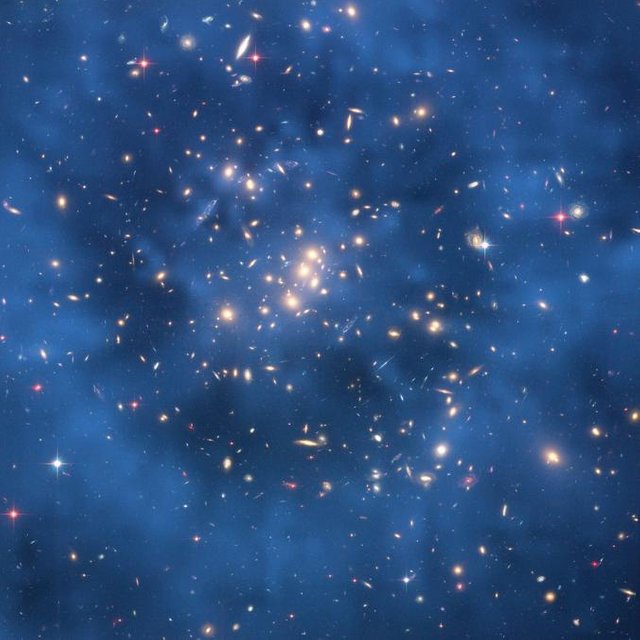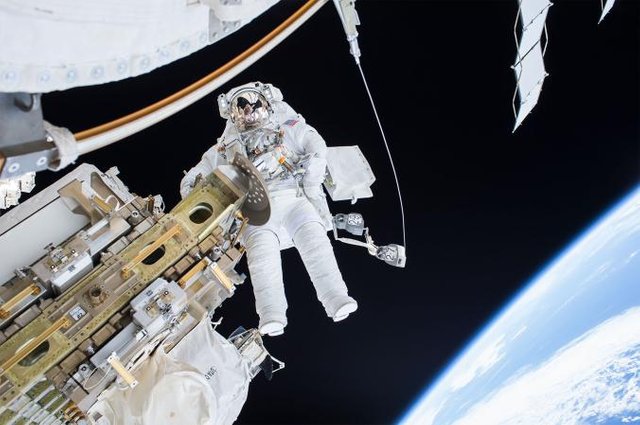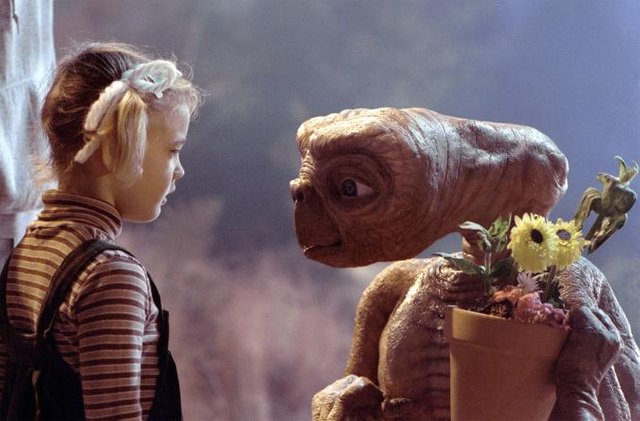5 Cosmic Mysteries That Scientists Still Hope to Solve
Now that gravitational waves have been detected, what's left to discover? Plenty—including some of the universe's biggest questions.
Scientists don’t know what dark matter is, but can tell it must exist. Galaxy clusters like this one (CL0024+17) bend light more than their ordinary matter ought to—suggesting that massive haloes of dark matter, simulated in light blue, surround them.
PHOTOGRAPH BY NASA, ESA, M. J. JEE AND H. FORD ET AL. (JOHNS HOPKINS UNIV.)
Now that physicists have directly observed gravitational waves, ripples through spacetime itself, the last bit of Einstein’s theory of general relativity has clicked into place. But there’s still more fun to be had: Physicists and astronomers are far from answering the universe’s most fundamental questions.Here are a few of the many mysteries of the universe that scientists haven’t solved yet.
WHAT IS THE UNIVERSE MADE OF?
For centuries, humans have gazed at galaxies and peered deep inside atoms. Yet everything we’ve ever seen makes up only five percent of the universe.We’re still looking for the rest. About 27 percent of the universe is believed to be dark matter, a ghostly substance that doesn’t emit or reflect light. Astronomers are sure that it exists, though, since galaxies wouldn’t have formed without it, and would fly apart unless they were embedded in enormous, stabilizing haloes of the stuff.No one knows for sure what dark matter is. It might be made up of hypothetical particles called weakly interacting massive particles, or WIMPS, or of sterile neutrinos. But researchers are still waiting for detectors to spot the tiny flashes of light that ordinary atoms should produce when dark matter particles slam into them.
If visible and dark matter combined are 32 percent of the universe, what’s the other 68 percent? A pervasive—and downright confusing—force known as dark energy.
To explain the universe’s bizarrely accelerating expansion, current theory holds that the universe must be dominated by a repulsive gravitational force. This force, what we think of as dark energy, probably has something to do with the energy content of empty space, a “cosmological constant” Einstein once concocted in a now-ironic effort to prove that the universe wasn’t expanding.
Astronomers are busy scanning the skies to measure dark energy’s magnitude. But how it actually works remains anyone’s guess.
Astronaut Tim Kopra performs a spacewalk outside the International Space Station. While it looks as though he’s free of Earth’s gravity, it’s still tugging on him; he’s free-falling around the Earth too quickly to be pulled down to the surface.
PHOTOGRAPH BY NASA
WHY IS GRAVITY SO WEIRD?
Of the universe’s four fundamental forces, gravity is an oddball, since there’s no good explanation for why it’s quadrillions of times weaker than electromagnetism or the forces that hold together atoms’ nuclei. Why can a mere refrigerator magnet defy an entire planet’s gravitational tug?Theorists have a few ideas. One longtime effort has tried reconciling relativity—which describes gravity as a consequence of curved spacetime—with quantum mechanics by ascribing gravity to fields of particles called gravitons. Or perhaps gravity really is as strong as the other three forces, but its influence leaks into extra dimensions.
ARE WE ALONE? AND WHERE IS EVERYONE?
Current evidence in our hunt for E.T. suggests that Earth is hardly alone—but we may need to broaden our definition of “alien.”On one hand, astronomers now have discovered thousands of exoplanets orbiting distant stars, allowing some to estimate that our galaxy alone hosts billions of potentially habitable, Earth-like planets. Some have even argued that the universe’s fundamental rules for energy and temperature inevitably lead to life’s emergence.But if the conditions of life are so common, why haven’t we seen signs of alien life? This issue, called the Fermi paradox, has drawn all sorts of explanations. Perhaps extraterrestrials are treating Earth as a wilderness area. Or maybe evolution contains a “Great Filter” that nips spacefaring civilizations in the bud.Some scientists and philosophers have even argued that biological life is transitory, and that the universe’s dominant life forms are superintelligent robots, which would live in colder, darker parts of the universe than where we’ve been looking. And perhaps these robots wouldn’t be keen to talk to us, since we’re comparatively primitive meat.
VIEW IMAGESWhile extraterrestrials are usually biological in the movies, some scholars suggest that superintelligent robots are the universe’s true dominant form of life. Move over, E.T.—and hello, Cylons.
PHOTOGRAPH BY SCREENPROD/PHOTONONSTOP, ALAMY
IS OUR UNIVERSE ALONE?
Just as Earth seems improbably friendly to life, some fundamental aspects of the universe sit at suspiciously convenient values—a pattern called the naturalness problem. Increase dark energy’s value slightly, for instance, and the early universe would have expanded too quickly for galaxies to stick together.Yet the universe’s overwhelming size all but guarantees that Earth-like planets exist, as a matter of probability. Along this line of thinking, some physicists argue that, like Earth among planets, our universe is one of innumerably many—but that ours happens to have the conditions that allow us to exist. Otherwise, we wouldn’t be here to study and write about it.Proponents of this multiverse model claim that it neatly explains our universe’s habitability, but many scientists find it irritatingly circular in its reasoning. Proving or disproving such a sweeping statement verges on the philosophical, and ultimately will have to grapple with how common universes like ours are in comparison to other varieties.


